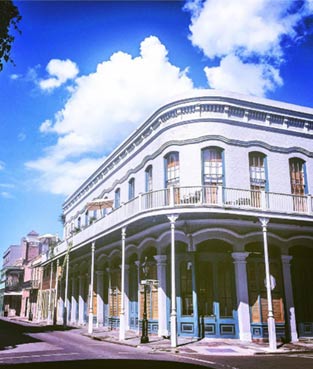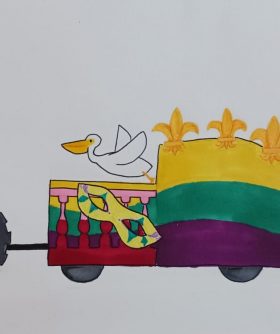Uptown
The grand mansions along St. Charles Avenue drowsing beneath ancient, stately oaks. The energetic bustle of Magazine Street. The spires of Tulane and Loyola Universities. The cool shade of Audubon Park. The raised Creole cottages and restrained Greek Revival houses and gabled Tudors and Carpenter's Gothic fantasies that line streets named Jefferson and Napoleon and Austerlitz and Amelia. And did we mention the zoo? And the golf course? Uptown New Orleans is the epitome of the gracious, gentle beauty that's defined New Orleans for many generations.
Historically, "Uptown" was a direction, meaning movement against the direction of the flow of the Mississippi. After the Louisiana Purchase, many settlers from other parts of the United States developed their homes and businesses in the area upriver from the older Creole city. In the 19th century, Canal Street was known as the dividing line between "Uptown" and "Downtown" New Orleans: the boundary between the predominantly Francophone area downriver and the predominantly Anglophone area upriver.
The very broadest definition of "Uptown," if derived from the historic definition including everything upriver from Canal Street, would encompass about one-third of the city. In its narrowest usage as a New Orleans City Planning neighborhood, "Uptown" refers to an area of only some dozen blocks centering on the intersection of Jefferson and St. Charles Avenues. Neither of these is what most New Orleanians of recent generations usually mean by "Uptown". While some may quibble about the exact boundaries, "Uptown" generally refers to the areas of the city closer to the river (the river side of S. Claiborne Avenue), upriver from the Pontchartrain Expressway, and nearer the modern CBD/Warehouse District neighborhood.
The boundaries of the federal Uptown New Orleans Historic District, listed on the National Register of Historic Places, are: the river to S. Claiborne Avenue, and Jackson Avenue to Broadway. Adjacent areas, which are often colloquially referred to as parts of Uptown, are other federal historic districts: Carrollton, the Garden District, the Irish Channel, Central City, and the Lower Garden District. According to the Greater New Orleans Community Data Center, Uptown, as a specific neighborhood, is bounded by Napoleon Avenue, Magazine Street, Jefferson Avenue and LaSalle Street. The neighborhood was once known as the Faubourg Bouligny until it became part of Jefferson City. The area was annexed by New Orleans in 1870.
Uptown was developed during the 19th century, mostly from land that had been plantations in the colonial era. Several sections were originally developed as separate towns, like Lafayette, Jefferson City, Greenville, and Carrollton. For a time in the early 19th century, most of Uptown was part of Jefferson Parish, until the City of New Orleans annexed the two. In 1874, New Orleans added the towns of Lafayette (not to be confused with the present city of the same name located in Lafayette Parish) and Carrollton. This newly-absorbed area became known as Uptown New Orleans.
People from other parts of the United States settled Uptown in the 19th century, joined by immigrants, notably from Italy, Ireland, and Germany. Uptown has always had a sizable African-American population. Notable Uptowners have included jazz musicians Louis Armstrong, Buddy Bolden, George Brunies, Harry Connick, Jr., Percy Humphrey, the Neville Brothers, Joe "King" Oliver, Leon Roppolo, singers the Boswell Sisters and Mahalia Jackson, author Anne Rice, inventor A. Baldwin Wood, ethnobotanist Mark Plotkin, professional football players Peyton Manning, Eli Manning, and Drew Brees, and rappers B.G., Birdman, Soulja Slim and Lil Wayne.



